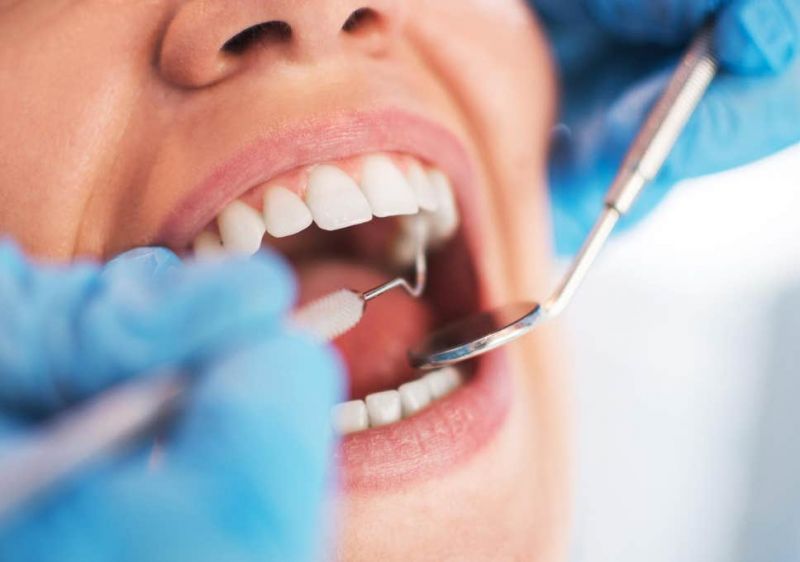There is hardly anyone in the world who has not faced dental or oral problems during his life. The problems that arise for a person’s mouth and teeth can disrupt his/her daily activities and sometimes even make him/her stay at home.
In this section, we want to talk about different problems that may arise for your teeth or mouth.
Toothache
Toothache appears in different ways. In some cases, this pain is related to only one tooth and in some other cases, this pain may be related to several teeth. Such pains occur when chewing. In some other cases, cold or hot foods or drinks irritate the tooth and make the pain worse.
In this section, we want to review the different forms of toothache together so that you can understand exactly what is happening in your body.
Acute or sharp toothache
Acute toothache can occur for different reasons. Anything can cause this, including decay along the gum line to cracks and fissures, cold temperatures, squeezing or crushing of teeth, and gaps between crowns and fillings. Even a crown or a filling that is much taller can increase pain when chewing.
Fortunately, acute toothache does not last long and has a relatively short duration. People can repair the gaps created by using ready-made crowns or the Onlay method to relieve and eliminate their pain. In other cases, adjusting the height of the crown or filling can simply relieve the pain. If the patient ignores his/her acute toothache, this pain will gradually turn into a slow pain, which we will explain further.
Dull toothache
A dull toothache is not something you can easily ignore. This type of toothache is a serious problem caused by significant damage to the tooth nerve. This form of pain usually shows high sensitivity to high temperatures. Such pains continue for a long time. In some cases, dull toothache occurs spontaneously.
In other cases, the pain starts in the middle of the night and doesn’t stop until the person seeks treatment and gets help from an oral health professional. Even touching the tooth can cause dull toothache. Such pain comes from the pulp part of the tooth. Root canal treatment or denervation of the tooth is always necessary to eliminate this pain.
Severe toothache
For example, if you are in Canada, any kind of severe toothache that occurs, you should immediately see a dentist in Canada. Visit him/her as soon as possible so that you do not experience this pain for a long time and get rid of it quickly. If your face is swollen, you probably have an infection or abscess that needs to be treated very quickly.
Pain along the back of the jaw
The pain that occurs in the back of the jaw, like the other pains we mentioned, is not common and can cause cancer. This type of pain indicates that one or more teeth are under pressure. If neglected, this pain will worsen over time.
Tooth abscess
A dental abscess is caused by the accumulation of bacteria in the dental pulp. If this area becomes infected, it will bear significant pressure. This infection is discharged and makes the targeted area more sensitive to inflammation and pain. Root canal treatment or denervation is necessary to eliminate this pain.
Intermittent toothache
A tooth that has an intermittent pain is probably reacting to the stimulus. Any action, from chewing to opening the mouth to speak, can cause such pain. Although these pains are transient and come and go, they can be quite painful. Such pains are basically caused by cavities, abscesses and cracks.
Gum diseases
Gums, like teeth, can experience various problems, which we will briefly explain below. Keep in mind, untreated gingivitis can lead to periodontitis, which eventually causes tooth loss and other oral problems.
Gingivitis or gum swelling
Gingivitis is the most common form of periodontal disease. This disease causes the gums to become red and swollen and bleed easily. At this stage, there is usually no discomfort or very little discomfort. Gingivitis often occurs due to poor dental and oral hygiene. This disease is eliminated by using professional treatments and home treatments related to the mouth.
Periodontitis
As we said, gingivitis that is not treated, eventually leads to periodontitis. Over time, plaque can spread and grow below the gum line. Toxins produced by bacteria in plaque irritate the gums. These toxins trigger a chronic inflammatory response where the body essentially turns itself on and the tissues and bones that support the tooth break down and wear away.
The gums are separated from the teeth and cavities are created (the space between the teeth and gums) where infection occurs. As the disease progresses, these cavities become deeper and more gum and bone tissue is lost. Often times, this destructive process has mild symptoms. Eventually, you may lose your tooth or have to have it pulled.

